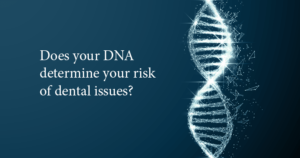Oral Cancer
Most people are surprised to learn that one American dies every hour from oral cancer; a death rate that has remained virtually unchanged for more than 40 years. In fact, recent statistics published by the American Cancer Society indicate that while the incidence and death rates for cancers overall has decreased, the incidence of oral cancer has increased by 5.5% and the death rate has increased by 1.5%
Oral cancer is far too often discovered in late stage development, the primary reason for the consistently high death rate. Oral cancer treatment often results in disfiguring effects on patients, and can seriously compromise their quality of life. Early detection and diagnosis can make a tremendous difference in life expectancy; oral cancer is 90% curable when found in its early stages. Unfortunately, 70% of oral cancers are diagnosed in the late stages, III and IV, leading to a five-year survival rate of 57%.
THE DEADLY STATISTICS
* Every hour of every day, one American dies of oral cancer.
* The mortality rate associated with oral cancer has not improved significantly in the last 40 years.
* The death rate in the United States for oral cancer is higher than that of cervical cancer, Hodgkin’s disease, cancer of the brain, liver, testes, kidney, or ovary.
* More than 30,000 Americans will receive an oral cancer diagnosis this year. In five years, only 57% will still be alive.
* 27% of oral cancer victims do not use tobacco or alcohol and have no other lifestyle risk factors.
Oral Cancer Risk by Patient Profile
As is the case with most cancers, age is the primary risk factor for oral cancer. Approximately 90% of oral cancer victims are age 40 and older, recent studies indicate that increasingly, patients younger than age 40 are being diagnosed with oral cancer. Though tobacco and alcohol use are the primary lifestyle risk factors that contribute to the development of oral cancer, 27% of oral cancer victims do not use tobacco or alcohol, and have no lifestyle risk factors. Oral cancer affects men more than women, 2:1, but oral cancer in women is on the rise nationwide.
Oral cancer risk by patient profile is listed below:
Increased Risk:
Patients age 18-39 with no lifestyle risk factors
High Risk:
Patients age 40 and older with no lifestyle risk factors
OR Patients age 18-39 with lifestyle risk factors
Highest Risk:
Patients age 40 and older with lifestyle risk factors or patients with a history of oral cancer
Risk Factors:
+ Lifestyle risk factors for oral cancer include: Tobacco use (any type, any age, within 10 years)
+ Alcohol consumption of at least 1 drink per day (3 ounces of hard liquor, 4 ounces of wine, or 12 ounces of beer)
Other risk factors:
+ Immune deficiencies such as HIV & AIDS
+ Human Papilloma Virus (HPV 16/18)


